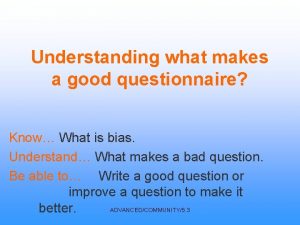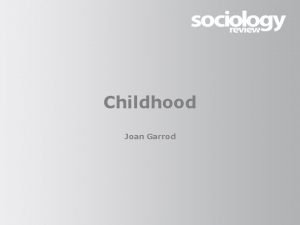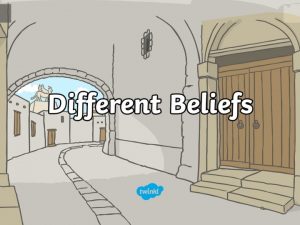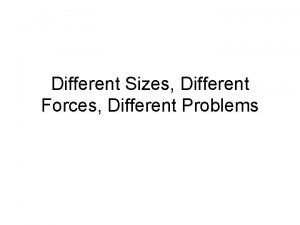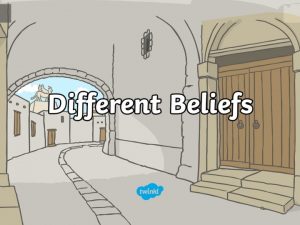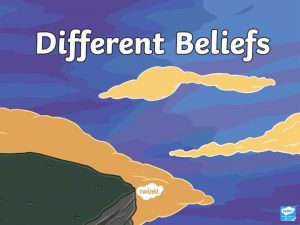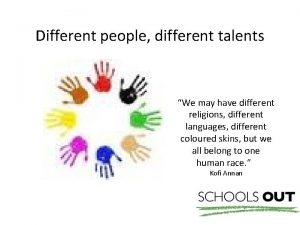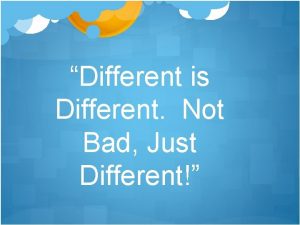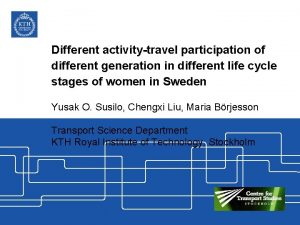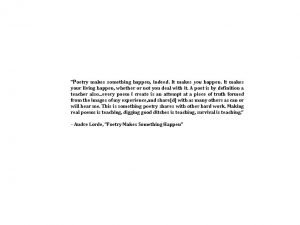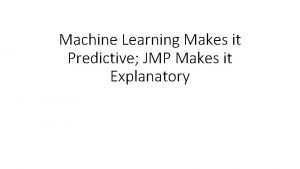What is childhood What makes childhood different to



























- Slides: 27

What is childhood? What makes childhood different to adulthood? How has childhood in the UK changed? How have children been affected by these changes? Quick fire 4! Write 4 sentences to answer these questions

Childhood as a Social Construct All students MUST be able to define social construction Most students SHOULD be able to apply this to the study of childhood. Some students COULD analyse different evidence that childhood is socially constructed

Transferring: PEEEL Key terms: Social construction. Key sociologists findings Selecting and applying RELEVANT evidence. Questioning what the evidence tells you.

The social construction of childhood p 179 -182 Childhood can be seen as a social construction. Social construction = something that is created by society, constructed from social meanings and definitions. It is not a natural or biological state. Instead, it is shaped and given meaning by culture and society. As a result, the types of behaviour considered appropriate for children, the way children should be treated, and the length of time that childhood should last, are socially constructed.

Evidence that childhood is socially constructed comes from three main areas: 1. The differing status, responsibilities and treatment of children in different contemporary cultures. 2. The way the view of the nature of children and childhood, and the status, responsibilities and treatment of children have changed through history, and continue to change today. 3. The differences between children’s status and responsibilities even in the same society.

The western notion of childhood Childhood in our society is regarded as a special time of life and children are seen as fundamentally different to adults. They are regarded as physically and psychologically immature and not yet competent to run their own lives. There is a belief that children’s lack of skills, knowledge and experience mean that they need to be protected and nurtured before they are ready for adult society.

Jane Pilcher (1995) – the most important feature of the modern idea of childhood is separateness. Childhood is seen as a distinct life stage. Laws regulate what children can do Sphere of education and family Differencei n dress Childhood as a distinct stage No paid work Children seen as vulnerable and in need of protection Products and services Childhood is seen as a ‘golden age’

…. But this isn’t the case in all cultures or in the past. What do the following images tell you about childhood in different cultures and ages?

A child soldier in Africa

Blackfoot Indians The Blackfoot Indians lived on the plains of Western Canada. Children were taught the skills of horse riding from a young age. One of Long Lance’s earliest memories was falling off a horse. He was picked up by his oldest brother and put back on. His brother said “Now, you stay there! You are four years old and if you cannot ride a horse, we will put girls’ clothing on you and let you grow up a woman”.

Children in the 17 th and 18 th century worked rather than going to school.



Phnom Penh, 8, Roathy, Cambodia Jaime, 9, New York, USA Lamine, 12, Bounkiling village, Senegal Alex, 9, Rio de Janeiro, Brazil Children and their bedrooms from different parts of the world (www. life-hack. co. uk) What conclusions can you draw from this about cross cultural differences in childhood?

Cross cultural differences in childhood Ruth Benedict (1934) argues that children in simpler, non-industrial societies are generally treated differently from their modern western counterparts in three ways: EXAMPLES They take responsibility at an early age Less importance is placed on children showing obedience to adult authority Children’s sexual behaviour is often viewed differently

Benedict’s three ways that non industrial society treats children differently to industrial society. Non-industrial society treatment of children: Evidence/Study to support/show this Take responsibility at an early age • Firth (1970) studied the Tikopia tribe in the Western Pacific and found that doing what you are told to do by a parent is a decision which is down to the child, not something which should be expected by an adult. Less value is placed on children showing obedience to adult authority. • Malinowski (1975) studied the Trobriand Islanders and found that adults took a tolerant and interested attitude towards the sexual exploration of children. Children’s sexual behaviour often viewed differently • Holmes (1974) studied a Samoan village and found that children were never ‘too young’ to complete a task such as handling dangerous tools or carrying heavy loads.

Cross-cultural evidence If childhood were simply a “natural” state, then it would be similar across all cultures. This is not the case. Other cultures treat children differently. Therefore, this is clear evidence that childhood is socially constructed.

Historical differences in childhood – Philippe Aries (1960) The Middle Ages (from the 10 th to the 13 th centuries) The modern notion of childhood began to emerge from the 13 th century onwards • Childhood did not exist • Children were not seen as having different needs from adults • Soon after being weaned, children entered wider society • Children were mini adults with the same rights, duties and skills as adults • Schools came to specialise purely in the education of the young • There was a growing distinction between children’s and adult’s clothing • By the 18 th century, handbooks on childrearing were widely available • These developments have led to the ‘cult of childhood’

Philippe Aries - review Ariès argues that ‘childhood did not exist’ in the Middle Ages. Using the factors listed below, explain why Aries believes this was so. • • • High infant mortality rates Low expectation of life Large families Children had little or no education Children started work at about the age of six Most adults were young and often had childlike qualities • Children often went to work away from home.

Many sociologists agree that the process of industrialisation underlies many of these changes. Children’s health and development became the subject of medical knowledge Laws restricting child labour and excluding children from work The introduction of compulsory schooling in 1880 Reasons for changes in the position of children Laws and policies that apply specifically to children Declining family size and lower IMR The growth of children’s rights Child protection and welfare legislation

What differences do you think might exist between children in the UK? Think about differences between gender, social class and ethnicity.

Differences between children in the same society Gender According to Hillman (1993), boys are more likely to be allowed to cross or cycle on roads, use buses and go out after dark unaccompanied. Bonke (1999) found that girls do more domestic labour – especially in lone-parent families, where they do five times more housework than boys.

Differences between children in the same society Ethnicity Brannen (1994) found that Asian parents were more likely than other parents to be strict towards their daughters. Bhatti (1999) found that ideas of izzat (family honour) could be a restriction, particularly on the behaviour of girls.

Differences between children in the same society Social class ü Poor mothers are more likely to have low birth weight babies, which in turn is linked to delayed physical and intellectual development. ü Children of unskilled manual workers are over three times more likely to suffer from hyperactivity and four times more likely to experience conduct disorders than the children of professionals. ü Children born into poor families are more likely to die in infancy or childhood, to fall behind at school and to be placed on the child protection register.

Summary – inequalities among children Gender differences Ethnic differences Class inequalities

1 – 5 Summary Write 5 lines about what you have learnt in the lesson today. BUT your first line has to have 5 words, the second 4 words, then 3, then 2, then 1. (I will do the same thing and we can see how closely I match your ideas)

Exam Practice Outline and explain two ways in which childhood can be seen as socially constructed (10 marks)
 Middle childhood age
Middle childhood age What makes poetry different than prose?
What makes poetry different than prose? Biome near the equator
Biome near the equator What makes them different?
What makes them different? What makes them different?
What makes them different? Argumenterande tal struktur
Argumenterande tal struktur Sound will travel at different speeds in different mediums.
Sound will travel at different speeds in different mediums. Acids and bases song
Acids and bases song Library thinkquest org 19537
Library thinkquest org 19537 Different materials have different
Different materials have different Why do different polymers have different properties
Why do different polymers have different properties Cultural relarivism
Cultural relarivism No two people
No two people Flame test principle
Flame test principle Different angle different story
Different angle different story Two figures of speech that involve comparisons are?
Two figures of speech that involve comparisons are? What makes theatre good
What makes theatre good Might makes right case study
Might makes right case study Gyrus and sulcus function
Gyrus and sulcus function Asking essential questions
Asking essential questions Don e love makes the world go round
Don e love makes the world go round Ella makes the generalization that a 4s fact
Ella makes the generalization that a 4s fact Spell well activities
Spell well activities What branch of the government makes treaties
What branch of the government makes treaties What makes up the biosphere
What makes up the biosphere Explicit costs are payments the firm makes for
Explicit costs are payments the firm makes for Kahootmake
Kahootmake What makes a good questionnaire
What makes a good questionnaire



























